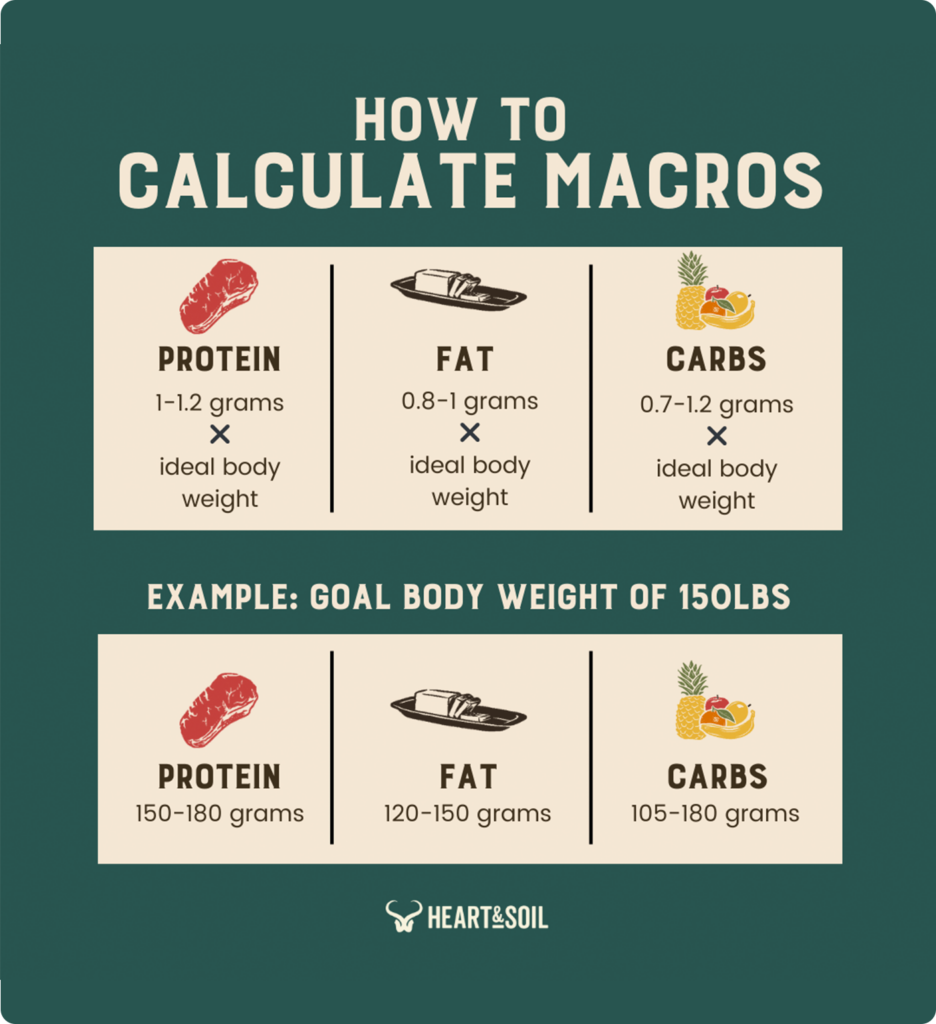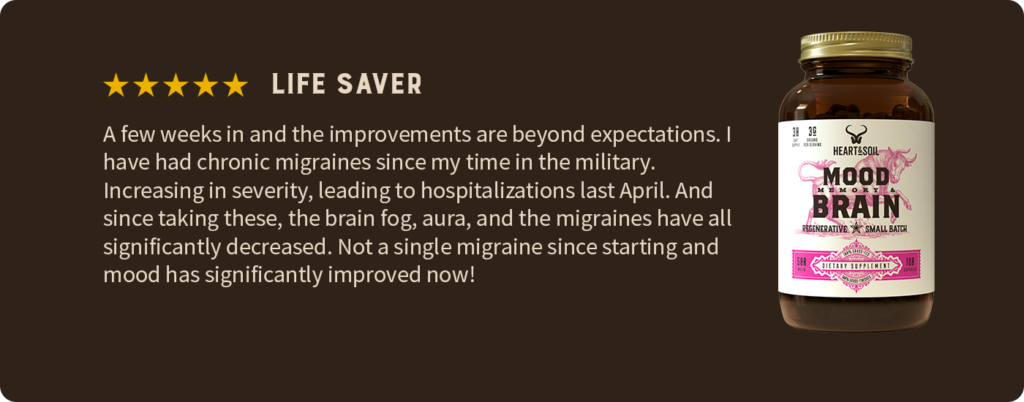PLEASE NOTE: The information in this blog is for educational purposes only. It is not a substitute for professional medical advice. Consult your healthcare provider if you’re seeking medical advice, diagnoses, or treatment.
Migraine headaches affect more than 1 billion people worldwide (1).
They’re a common neurological disorder that comes with debilitating symptoms. Descriptions of migraine-like headaches even stretch back 5,000 years in ancient Sumer.
In this article, we’ll make suggestions about the diet and lifestyle choices you can make to lower your risk of migraines.
You’ll also learn how to find a trusted medical professional, resources to learn more about migraines, and multiple reviews from animal-based dieters who’ve improved their migraines.
Shall we?
Migraines: What Are They? Why Do They Occur?
As widespread as migraines are, the underlying cause is unclear.
As we learn more about the gut-brain connection (2), the roles of food, the microbiome, and lifestyle in triggering migraines become clearer. Food sensitivity is a common cause of migraines, but it isn’t the only one.
Another promising idea is the “neuro-energetic hypothesis,” which suggests that a stress-induced energy deficit of the neurons in the brain can trigger migraines.
The mechanism underlying this hypothesis indicates that neuronal (having to do with neurons) stress from processed food, physical inactivity, psychological stress, environmental pollutants, etc., trigger a cascade of biochemical interactions.
This cascade includes disrupted insulin signaling and brain-specific insulin resistance. Once the neurons in your brain run out of energy (Which happens if they stop taking in glucose because they also stop responding to insulin ), a migraine develops (3, 4).
Another argument favoring this mechanism is the prevalence of mitochondrial dysfunction in migraine sufferers (5). Mitochondria are the power plants of human cells. If something interferes with the ability of mitochondria to produce energy, it seems to trigger migraines.
Animal-Based Nutrition as a Tool Against Migraines
We believe diet and lifestyle choices can significantly affect the frequency and severity of migraine headaches.
Animal-based nutrition is our suggestion for anyone looking to identify food sensitivities or improve their health.
The animal-based diet can be summarized as follows:
- Prioritizing well-raised meat and organs.
- Eliminating processed foods such as vegetable oils and artificial sweeteners.
- Obtaining carbohydrates from fruit, raw dairy, honey, maple syrup, or low-toxicity vegetables.
Many individuals with migraines benefit from eliminating gluten, lectins, and emulsifiers (such as guar gum). Each of these can damage your gut!
Additives like aspartame or MSG are common food sensitivities that can contribute to migraines (6).
Here’s an example from Christina V. of the dramatic improvements that can arise from an animal-based diet.

Reviews like this are not a one-off. We see stories like this every day!
The specific approach looks different for everyone, but the fundamental principles of the animal-based diet have helped thousands of people reclaim their health.
10 Lifestyle Tips to Help You Live Free of Migraines
This list is based on the idea that migraines are connected to your metabolism (i.e., your body’s ability to turn food into energy) and your cells’ ability to use that energy.
By eating nutrient-dense foods, eliminating toxins, and managing stress, you’ll attack the issue from multiple angles.
We view health through the lens of how our ancestors lived and ate. This almost always means stepping outside conventional thinking and treating your body as a complex network of interdependent systems with incredible healing power. The results may not be immediate, but they’re lasting.
We suggest these ten principles as a foundation for healing, maintaining, and optimizing your health:
1. Eliminate Seed Oils
Processed vegetable oils (corn, safflower, sunflower, soybean, cottonseed, canola, peanut, grapeseed, sesame, etc.) contain high levels of linoleic acid (omega-6 polyunsaturated fatty acid or PUFA). Excess linoleic acid is linked to several serious health issues like obesity.
Your fats should ideally come from sources that contain stearic acid, a crucial fatty acid that will help turn your mitochondria “on” and shift them into a “fat-burning” mode. Stearic acid aids satiety (feeling full), weight loss (7), and proper hormone function (8).
The best sources of stearic acid are grass-fed, grass-finished 80/20 ground beef, fatty steaks, suet, bone marrow, tallow, ghee, and butter.
Consuming fats this way also means reading ingredient labels and avoiding most packaged foods. Industrial food production relies on seed oils because they’re cheap and abundant. When dining out, you can request the kitchen cook your food in butter or without vegetable oil.
It’s also important to source your olive and avocado oils from reputable sources. Many brands at the grocery store cut their products with soybean, canola, or some other seed oil (9).
Additionally, do your best to avoid fatty pork, chicken, duck, turkey, or other monogastric animals primarily fed corn and soy diets.
2. Prioritize Well-Raised Meat and Organs

Incorporating unprocessed meats into your diet can be a delightful way to get the macro (protein, carbs, fat) and micro (vitamins, minerals, peptides) nutrients your body needs.
Simply put, meat and organs are some of the most nourishing foods on the planet. You can get nearly every vitamin and mineral you need.
We suggest you focus on meat and organs from grass-fed ruminant animals such as cattle, buffalo, goat, lamb, and deer.
Our concerns with grain-finished meat come down to the feed quality these animals consume. The grains that makeup cattle feed are heavily sprayed with pesticides and can have issues with mold toxins. Grain-fed animals are often administered antibiotics to fight disease and promote fast growth.
When consuming poultry, eggs, or pork, stick with free-range or pasture-raised options. Industrial farms rely on cheap corn and soy-based feeds to raise and fatten their animals.
Even “organically raised” animals may be fed organic corn and soy — resulting in a buildup of linoleic acid in their fat tissues.
3. Eliminate the Most Toxic Plant Foods
These include leaves, stems, nightshades, and seeds (nuts, grains, and legumes).
As discussed in Dr. Paul’s book, The Carnivore Code, these foods contain many plant defense chemicals that can trigger the immune system and affect the digestive system negatively. These are also common food sensitivities for many individuals.
We suggest focusing on low-toxicity sources such as honey, berries, avocados, olives, squash, or other seasonal sweet and non-sweet fruits.
Check out our animal-based infographic for a more exhaustive list!
4. Adequately Nourish Your Body
Eating individually sufficient amounts of animal-based fat, meat, organs, raw dairy, fruit, and other carbohydrates helps hormones, energy, mood, immunity, and digestion thrive.

In addition to organs, consuming lots of protein in the form of sustainably raised meat is essential. You also need sufficient fat and carbohydrates to achieve the best nutrition possible. The following formulas will help you assess the proper macronutrient ratios for your body type.
Consider these ratios as goals to work up to as you become more comfortable with animal-based protein.

Regarding your fat and carbohydrate intake, if your total activity level is on the lower end of the spectrum, you might experiment with the lower end of the range, but if you are more active, try the higher end of the range.
If you wish to track your intake easily, MyFitnessPal and Cronometer are great tools. Don’t get too caught up with exact numbers!
We also suggest consuming bone broth made from bones and connective tissue. High-quality bone broth contains an important amino acid called glycine, which plays several roles in our physiology (10). It functions as a neurotransmitter in the brain and supports relaxation (11)!
Although this study isn’t a human trial, it indicates that bone broth can have a neuroprotective effect against migraines. This aligns with our understanding of the nutrients contained in both broth and their impact on the nervous system.
5. Rest, Recover, and Reduce Stress
Quality rest is one of the most straightforward (yet often overlooked) health improvement strategies.
Consistent, restful sleep can dramatically improve energy levels, immune function, and overall well-being. Alternatively, stress and fatigue can cause or exacerbate inflammation (12).
We suggest you prioritize a consistent sleep routine of at least 7-8 hours per night. Engage in activities that promote relaxation, such as pursuing hobbies, spending time with loved ones, reading, or meditation.
6. Stay Active
Exercise and incorporate daily movement, but avoid overtraining, as excessive exercise can elevate cortisol levels (13).
The minimum suggestion we give is two or three 15-minute walks pre/post-meals, as this can contribute to healthy blood glucose control (14). Bonus points for adding in some weights for strength training!
7. Sunbathe
Whatever you’ve heard about the dangers of sunlight, the reality is that our bodies use sunlight to produce vitamin D and nitric oxide (15), which also help regulate hormones, decrease blood pressure (16), and improve overall blood flow, which is important for a healthy brain.
Go outside, play in the sun, and enjoy nature while you’re at it!
Daily sun exposure can also stimulate your natural circadian rhythm, promoting sleep (17), recovery, and muscle growth. It may even improve gut health (18)!
8. Use the Sauna
Heat exposure enhances detoxification pathways, up-regulates glutathione production, increases heat shock proteins, and enhances mitochondrial adaptation. It’s also known to be cardioprotective.
It can also dramatically improve the immune system and vascular health (19, 20, 21, 22).
The magic for vascular health comes with the expansion of blood vessels, production of growth factors, and delivery of nutrients within the micro capillaries (tiny blood vessels) that feed essential tissue.
9. Cold Plunge

Cold therapy provides many benefits to help strengthen the immune system and improve vascular health. It also aids in fat burning by shifting white adipose (fat) tissue to brown, more metabolically active adipose tissue (23, 24).
Start by spending one minute in a cold shower at least three times a week and work up to five minutes. Or, if you have access to a cold plunge, you can follow this protocol (25).
10. Work With a Professional
You may want to work with a professional if you’re already consistent with your diet and lifestyle, but migraines are a lingering issue.
Providers can run tests to dig deeper into root causes, such as heavy metals, mold, parasites, and other environmental toxins. These are incredibly common today, yet they can fly under the radar!
If needed, check out the Society of Metabolic Health Practitioners, where you can find physicians from all around the globe who understand the immense value of making animal foods the center of the diet.
Another popular option is IFM Find a Practitioner for a functional medicine approach.
What We Suggest: The Migraine Stack of Supplements
We’ve developed supplements that preserve the nutritional benefits of raw organ meats in an encapsulated form that is shelf-stable (freeze-dried, with no chemical preservatives) and easy to take.
This trio of supplements can provide critical nutrients to support your overall health.
The first supplement in our migraine stack is the Mood, Memory & Brain complex. It’s packed with nutrients and peptides critical for better learning, focus, mood, and mental acuity.
It contains beef brain, including the cortex, hypothalamus, pituitary, bone marrow, and liver.
We have heard some excellent reviews from people who experienced relief from migraines after taking this product – such as this review from James!

This supplement contains red and yellow bone marrow to support the formation of red blood cells, cartilage cells (chondrocytes), bone cells (osteocytes, osteoblast & osteoclasts), and other vital tissues found throughout the body.
It also includes omega-3 fatty acids, EPA, DHA, alkylglycerols, adiponectin, hormones, growth factors, peptides, and other micronutrients.
Finally, our Histamine & Immune complex is designed to support people dealing with inflammation, histamine reactions, and immune dysfunction. It contains thymus, lung, spleen, liver, and kidney.
This supplement provides you with a host of peptides that help program and stimulate your immune system, including thymopoietin, thymulin, thymosin, hepcidin, splenin, tuftsin, and splenoptin, along with vitamins A, E, K2, and B12.
Resources to Learn More
There is no silver bullet for migraine sufferers. The suggestions in this article should help you address some of the most common triggers and help restore the function of your nervous system and metabolism.
We’ve also collected some helpful resources to help you on your journey toward radical health.
1. Video: The Functional Medicine Approach To Ending Migraines (42 minutes, YouTube)
In this episode, Dr. Mark Hyman sits with Dr. Todd LePine to discuss the Functional Medicine approach to ending migraines.
They explore how to identify and eliminate what might be causing your migraines and share specific patient migraine cases they have treated.
2. Video: The importance of mitochondrial health (4 minutes, YouTube)
Paul Saladino, MD, speaks with Michael Twyman, a board-certified cardiologist, about the importance of mitochondrial health in our overall health and the factors and labs to consider for longevity.
3. Podcast: How to Stop Headaches Using Science-Based Approaches (146 minutes, Hubermanlab.com)
In this episode, Andrew Huberman discusses the causes and treatments of different headaches, including tension headaches, migraines, sinus and cluster headaches, and menstrual and other hormone-based headaches.
He describes distinguishing between the different headache types and selecting the proper treatment, including prescription-based and non-prescription-based treatments and behavioral and nutrition-based approaches.
4. Video: MIGRAINES: The Root Causes and Functional Medicine Solutions (7 Minutes, YouTube)
Evan Brand looks at the causes and solutions of migraines from a functional medicine perspective. Food sensitivities, poor sleep, hormonal imbalances, and nutrient deficiencies commonly contribute to migraines.
5. Article: Migraine, Mast Cells, & a Low-Histamine Diet
This article from the Institute of Functional Medicine outlines how migraines develop from various factors. They discuss how a low-histamine diet may help improve migraines.
Subscribe to future articles like this: